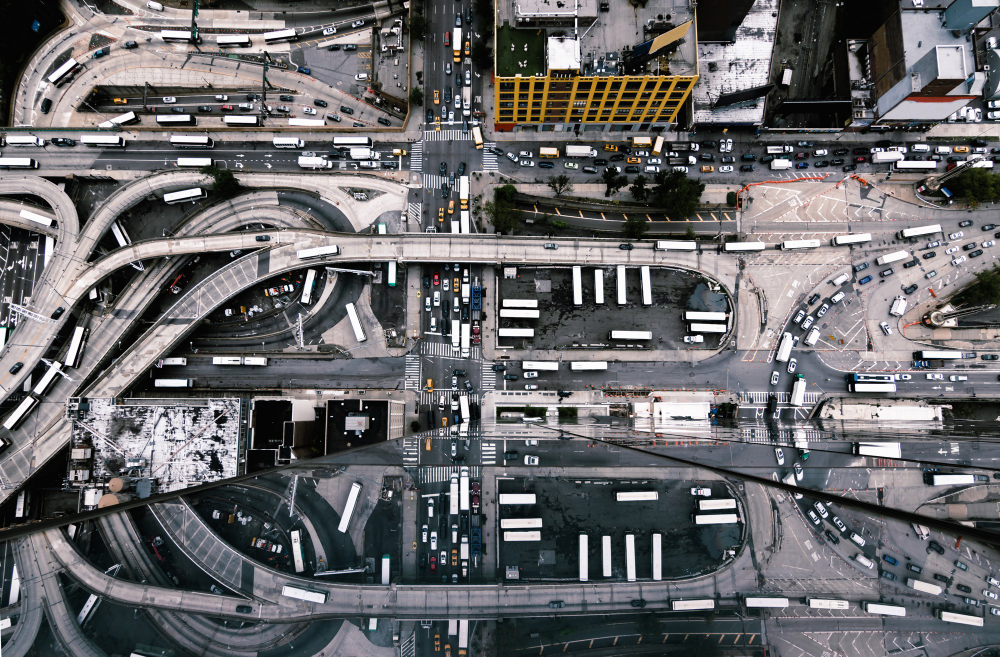The Essence of City Creation: Unpacking 7 Core Urban Planning Concepts
- March 22, 2024
- 3 min

In the teeming metropolis of our lives, the spaces that surround us are not random occurrences; instead, they have masterfully constructed arenas of human creativity and forward thinking. At the forefront of this endeavor is urban planning, a discipline that skillfully interweaves the threads of art, science, and policy to mold the urban fabric into thriving, habitable, and enduring spaces. This realm is charged with ensuring our urban environments serve their communities effectively while welcoming growth and evolution. Let’s embark on an exploration of seven essential urban planning concepts that shape the spaces we inhabit, each contributing uniquely to the tapestry of urban design development.
1. The Grid Layout: Bringing Order to Urban Complexity
Firstly, the grid layout introduces a straightforward yet profoundly influential framework in urban design development. This method arranges streets to intersect at right angles, creating a checkerboard of navigable spaces. Not only does this facilitate straightforward movement and navigation, but it also ensures land is distributed fairly. Additionally, it underpins efficient infrastructure placement. Despite criticisms of potentially promoting uniformity and traffic congestion, its simplicity and functionality cement its role in urban planning.
2. The Organic Approach: Echoing Nature’s Footsteps
Secondly, diverging from the grid’s rigidity, the organic approach in urban design development takes inspiration from the contours of the natural world. This strategy allows for a more spontaneous evolution of cityscapes, with roads that curve and meander, respecting the land’s innate characteristics and historical trails. This method fosters a more intimate connection with the environment, though it poses challenges for infrastructural planning and growth, demanding a careful balance between natural allure and urban necessities.
3. The Radial Pattern: From the Center Outwards
Furthermore, the radial pattern centralizes urban design development around a pivotal point, from which the city expands outward like the rays of the sun. This layout is particularly suited to cities with significant landmarks or historical centers, enhancing access to these vital areas. It promotes a hierarchical spatial organization, centralizing key functions for better transport and communication systems. However, meticulous planning is vital to prevent traffic snarls and uneven development.
4. Transit-Oriented Development (TOD): Connectivity at Its Best
Moreover, TOD represents a contemporary take on urban design development, emphasizing public transport accessibility to discourage car reliance and foster sustainable lifestyles. By clustering residential and commercial zones around transit hubs, TOD aims to create lively, accessible communities within a stone’s throw or a short ride away. This approach advocates for high-density, mixed-use areas, potentially enhancing urban living standards and environmental sustainability, albeit requiring significant cross-sectoral investments.
5. Green Urbanism: Towards an Eco-Friendly Future
Additionally, green urbanism reimagines urban design development with an unwavering commitment to environmental sustainability. This philosophy extends beyond integrating green spaces, encompassing energy efficiency, water conservation, and sustainable transport among its principles. Its goal is to harmonize urban living with the ecosystem, enhancing residents’ health and well-being. Achieving this vision, however, demands substantial support across funding, policies, and public engagement.
6. Smart Cities: Technological Synergy with Urban Spaces
Similarly, smart cities integrate advanced technology to refine urban design development, optimize city services and enhance life quality. From managing traffic to conserving energy through smart grids, technology becomes integral to urban efficiency. These cities strive to be more attuned to resident’s needs, providing solutions that are smart, sustainable, and convenient. Yet, this reliance on technology raises concerns about privacy, security, and the risk of a digital divide.
7. Mixed-Use Development: A Symphony of Urban Functions
Lastly, mixed-use development harmonizes residential, commercial, and occasionally industrial elements within a single framework, enriching urban design development. This approach cultivates a vibrant, integrated urban milieu where living, shopping, working, and leisure coexist seamlessly. By promoting proximity and community cohesion, mixed-use developments can significantly reduce commute times and foster a strong community spirit. Nonetheless, this model requires meticulous planning to ensure a harmonious blend of diverse uses catering to a wide audience.
Crafting the Cities of Tomorrow
In essence, urban planning transcends mere technicality; it is a dynamic interplay between current demands and future aspirations. Through the exploration of these seven urban planning concepts, we uncover diverse pathways to sculpting cities that are not only functional but also places of enrichment and belonging. Each concept provides a distinct lens through which to address the multifaceted challenges of urban design development, from enhancing connectivity and sustainability to fostering inclusivity and resilience. As we look ahead, the principles of urban planning will continue to guide us in creating spaces that reflect our collective hopes, dreams, and the enduring spirit of community.
Read More:
About Phil Myrick
Phil Myrick is an advisor to planning and development projects around the world and former CEO of Project for Public Spaces. Phil applies research into how people interact with their environments and each other to create vibrant places, destinations, districts, and developments. His strategic advice has helped his clients achieve their goals of attracting people, engaging people in their community, strengthening connections and social fabric, and stimulating economic development. Phil is married with two teenagers and struggles to satisfy his passion for being outdoors or on the water. https://philmyrick.com
